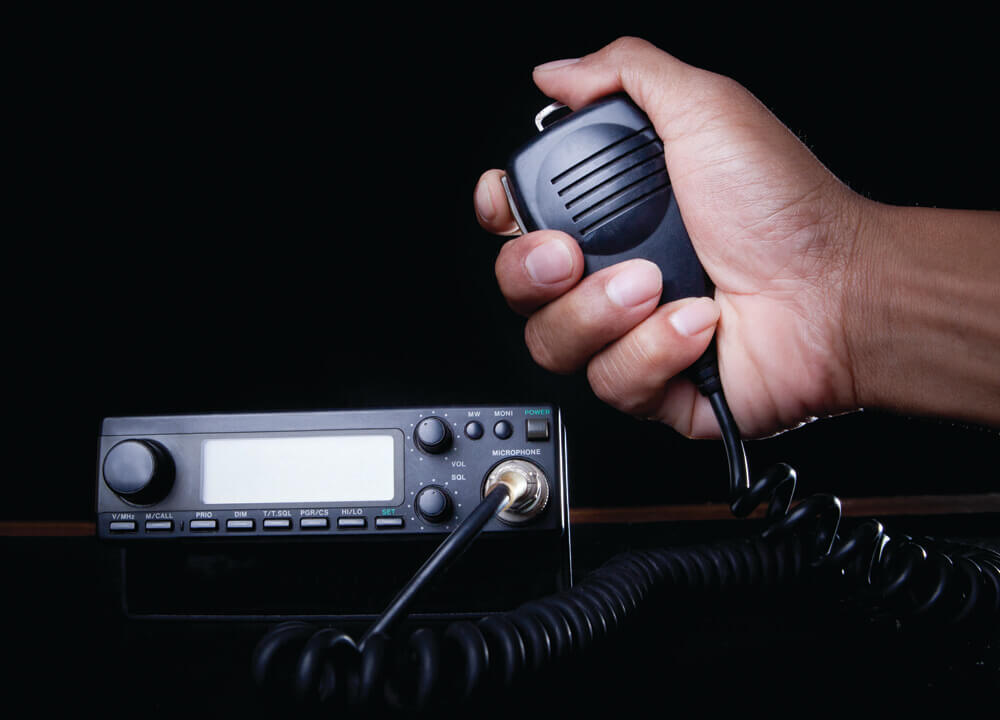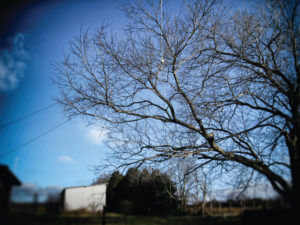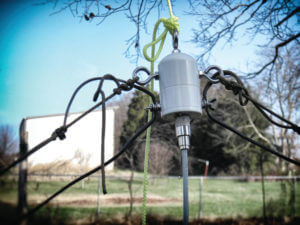
Amateur radio operators usually refer to their communications equipment as their “station,” whether it is a base station at home, mobile station in a vehicle or portable station when on foot. There is one other type of station only a small number of hams really concentrate on: the emergency communications station.
Putting together a field, or emergency communications, station (EmComm) is similar to setting up a home station. Both types of stations share many common elements: radios that cover all amateur bands, antenna systems appropriate for those bands with some type of supporting structure, and a source of electricity for power. The operation of both station types is about the same, but the environmental conditions may be vastly different.
This article will highlight some of the major differences regarding equipment selection, operating parameters and skill sets that separate the two types of stations in their typical configurations.
AT HOME
When a ham radio operator assembles a home station, it is often set up in a space that will be dedicated to amateur radio activities, creating what is often referred to as the “shack.” Equipment can be permanently installed, and antenna feed lines can be routed in such a way that they are well protected from both physical hazards (i.e., strong winds) and potential interference sources. Antennas can be mounted high on a permanent structure designed to provide the greatest potential for clear and effective communications.
Radio transceivers can be placed at the optimal viewing height and angle to allow for efficient operation and eliminate operator fatigue. Items can be placed in logical and well-organized positions so the operator can move smoothly from one task to the next. Antenna feed lines may be of any type and can be cut to the perfect length to minimize any “loss” (“loss” refers to energy absorbed in the feed line that should have gone to the antenna). A virtually limitless supply of power is available in a home station, permitting continuous operation with little concern of energy consumption.
Environmental conditions at home can be nearly perfect in terms of temperature, humidity, lighting and ambient noise— most anything that might distract the operator can be removed or controlled. The equipment can be of whatever quality the operator chooses, have as many functions and be as large and powerful as desired.
Because all the comforts of home are available (including food, water, sanitation and security), the operator can concentrate on the enjoyment that amateur radio provides. A well-equipped shack can represent quite an investment in time and money—sometimes, well in excess of 10 thousand dollars—and the operator would be hard pressed to risk taking that kind of in vestment out into the field.
IN THE FIELD
Things can change dramatically when the operator is forced (or chooses) to take the station out of the shack and set it up outdoors. In this environment, portability, dependability and efficiency are key factors. Simplicity replaces the extra functionality of deluxe equipment, and adaptability trumps convenience. Gone is the expansive desk—now replaced by a tree stump or tailgate.
The KISS (“Keep it simple, stupid!”) approach becomes the maxim, and Murphy’s Law (“Whatever can go wrong, will”) is always a concern. The operator must forget about the comfort provided by four walls and a roof but remember to always have a way to shelter the station from the elements.
Even without the comforts of a home station, an austere field station can still provide effective and reliable communications. Many amateur radio operators use the same equipment in their shack that they would take into the field for EmComm use and frequently practice taking their station outdoors to simulate an emergency deployment. This ensures the station works as expected and that it c an be set up in minimal time with little or no assistance. Much like a shakedown exercise, any problems can be discovered and resolved well before an emergency arises.

When assembling an EmComm station, the equipment should be compact to meet portability requirements, and it must be rugged enough to handle extreme variations in temperatures, humidity and rain, not to mention rough handling. Controls must be easy to manipulate and large enough to allow for operation with gloved hands. Displays need to be simple and viewable in any lighting condition and at awkward angles. Peripheral equipment, such as antenna tuners (sometimes required to “match” the output of the radio to the impedance of the antenna system), may be necessary in a field or EmComm station but should be kept to a minimum, both in size and number, while still maintaining the station’s capabilities.
Antennas designed to be mounted high on a tower generally are not practical for a hasty deployment. Hams will usually purchase less-complex antennas, such as the G5RV (invented in 1946 by Louis Varney; amateur call sign “G5RV”) to use in field conditions. Amateur radio operators will often fabricate their own antennas, tuned to be resonant on the desired frequencies, either from published designs or of their own conception, with antenna supports provided by nature or brought along by the operator.
Feed lines used in a home station can be of any type suitable for the frequencies on which it will be operating: coax, hardline or open-wire. Feed lines used in Em- Comm stations are usually a “one-size-fits- most” variety; coax such as RG-8X or LMR-240 are good choices for portability because of their smaller diameter and increased flexibility. Even though these types of feed lines may exhibit higher loss than those favored for permanent installations, the shorter lengths used in field stations mitigate the loss and are easier to pack into smaller spaces.
One of the most limiting factors with EmComm stations is the availability of electrical power. Power for the station usually comes from batteries. Rechargeable batteries, such as those designed for deep discharge (deep cycle) used in the marine and recreational vehicle industries, are great power sources for field and EmComm stations. Equipment designed to work on the voltage provided by the battery can be directly connected (with an inline fuse) or through a power conversion device, such as an inverter, to provide the required voltage.

Large deep-cycle batteries are heavy and can pose a hazard due to leakage (even maintenance-free batteries can leak from the vents along the top of the battery). Care must be taken to keep the battery in an upright position in transit and use. Other battery types, such as SLA (sealed lead acid), AGM (absorbed glass mat) and gel cell batteries are available in more-compact sizes—making them easier to transport because of their lighter weight and safer due to their leak-free construction.
If a single battery is unable to supply enough current to meet high-power transmitting demands, multiple batteries can be used simultaneously, wired in parallel, to provide sufficient power to the transceiver. Newer battery types derived from lithium ion technology offer greater energy density (more stored energy per ounce) and more-consistent voltage across their discharge cycle, but these batteries are usually more expensive and might require specialized charging systems.
Solar charging systems (consisting of one or more solar panels and a charge controller) will help meet the station’s power demand during daylight hours, with any excess power they produce going toward recharging the batteries. Batteries can also be recharged by a vehicle’s charging system or by a fuel-powered generator (through an appropriate battery charger).
When operating from a limited source of power, the following operating procedures should be observed for efficiency: Use the lowest transmitter power necessary to establish and maintain contact; keep transmissions brief and concise (sometimes, through the use of brevity codes and phrases); and power off any equipment not required at the time.
When the EmComm station is not in use, it needs to be stored and ready for transport in a way that will keep the components organized and secure. Surplus metal ammunition cans are available in many different sizes and offer increased protection from rough handling and environmental hazards; and, with slight modification, they can also protect against a possible EMP.

Ammunition cans are usually very affordable and widely available. There are several companies that make custom cases designed for equipment to be rigidly mounted inside and feature opening or removable covers for access to the interior. For less-sensitive and bulky equipment such as antennas and feed lines, plastic tubs with secure fitting lids are more than adequate.
THE RIGHT EQUIPMENT
As stated earlier, when selecting equipment for an EmComm or field station, a simple, solid design should be the primary consideration. Having a transceiver that does everything imaginable is fine in the shack, but when stress levels are high, normally easy tasks can become difficult. Following the KISS approach will reduce the chances of becoming overwhelmed.
For long-distance communications, a transceiver that covers all the high-frequency bands is necessary. Emergency communications can, and do, occur on all amateur bands, and being able to transmit on the 80, 40, 20 and 15 meter bands will ensure the station is capable of continued operation as band conditions change. HF communications can be difficult at times due to atmospheric and man-made noise conditions; having the ability to transmit at power levels as high as 100 watts is justified.
New HF transceivers meeting these criteria generally cost in the $800 to $1,600 (U.S.) range. Some good examples are the Yaesu FT-450D and Kenwood TS-480SAT, both of which have an internal antenna tuner—a worthwhile feature when using a fieldexpedient antenna. The Icom IC-7200 was designed to meet the requirements of field communications but does not offer an internal tuner. There are many other transceivers that will perform well in a field or EmComm setting.

VHF and UHF frequencies are used extensively in emergency communications to provide local and regional coverage. The 2-meter band is where most official emergency management activity can be found due to its good range characteristics and the abundance of repeaters, especially in densely populated areas. Single-band, 2-meter transceivers are usually sufficient for participating in or monitoring emergency management radio traffic.
Multiband VHF/UHF mobile radios are available that cover both the 2-meter and the 70-centimeter bands (420 to 450 MHz in the United States) and provide additional versatility. Single-band, mobile, 2-meter radio prices start at around $150 new, and multiband VHF/UHF mobile transceiver prices start at about twice that. Some good examples are the Yaesu FT-2900R and the Icom IC-2300H–both single-band, 2-meter transceivers.
For multiband, the Yaesu FT-7900R and the Icom ID-880H are solid performers. Keep in mind that not all mobile transceivers are created equal; select a model that has a true low-power setting. Most mobile radios transmit at 5 watts or fewer on the low-power setting, whereas some push considerably more—up to 25 watts at their lowest power setting.
Again, power conservation is paramount when relying on batteries. Several models have multiple power settings, from lowest to highest, that allow a step up in range with a minimal increase in power consumption (for example, 5, 10, 30 and 75 watts selectable output on the Yaesu FT-2900R).
A few manufacturers have developed designs that cram very capable multimode/all-band transceivers into ultra-compact housings, creating an all-in-one radio that covers all bands from HF through 70-centimeter UHF. These transceivers may even offer 100 watts output and other features usually found in larger base station radios.
While these are great radios, the tiny control panels do not leave much real estate for buttons and knobs, meaning that many of the advanced functions are buried in submenus. Some, like the Icom IC-7100, have touch screens to make access to settings and functions somewhat easier. All-in-one radios, no matter how capable, can only do one thing at a time, so if working HF and VHF frequencies at the same time is required, two separate transceivers are needed.

While base station and mobile radios are huge assets to the EmComm station, there are occasions when the operator needs the added portability of an HT (handheld transceiver). An HT can perform many of the tasks of the mobile transceiver, although with lower maximum power capability—but with no power cords to contend with. The short, rubber antenna that comes with an HT (nicknamed the “rubber ducky”) can be removed. This allows a more effective antenna to be installed in its place, either directly to the HT or by means of an adapter.
Many HTs have optional battery packs available that will accept AA alkaline batteries, thus permitting operation beyond the capacity of the rechargeable battery. HTs can cost as much as mobile transceivers and are available in both single and multiband models. Most handhelds are surprisingly tough, able to withstand drops and falls, and some are water resistant to the point of being submersible. For emergency situations, this level of versatility and durability makes the HT an essential piece of gear.
The newer digital protocols, such as D-STAR (digital smart technologies for amateur radio—an open standard digital protocol used by Icom America) and System Fusion (Yaesu’s implementation of digital amateur radio based on C4FM), among others, provide little benefit to emergency communications. The differing protocols are incompatible with one another; even if they were compatible, nondigital radios would be unable to decode the signals.
Digital protocols are appearing on (HF, VHF and UHF) base, mobile and handheld transceivers, as well as repeaters. For emergency communications, interoperability is crucial; digital capability or compatibility should not be a consideration. If using a digital-capable radio for EmComm purposes, ensure it is set to operate in the analog mode. The digital protocols mentioned here are not the same as digital modes used elsewhere in amateur radio (digital modes will be the topic of a future article).
When purchasing equipment for critical communications, place quality before price. The name brand manufacturers (Yaesu, Icom, Alinco and Kenwood, to name a few) are known for producing high-quality transceivers and other amateur radio equipment. Their commitment to quality carries over into the documentation that accompanies their products and makes for an enjoyable experience when setting up the equipment.
Many new radios designed and manufactured in China have become available within the last few years and are being sold at very low prices. Most of these were originally designed for other radio services and have been programmed or modified by the manufacturer to cover the amateur radio bands, sometimes without FCC approval or certification for use on ham bands in the United States.
The sparse documentation that comes with those radios often leads to frustration when attempting to program the radio. Many users, new and seasoned hams, alike, resort to programming through computer software; this dependency on a computer to program the radio can lead to problems in the field. Learn to program manually through the buttons and menus on the radio, and keep a cheat sheet on hand if necessary. User manuals for all equipment should be kept with the station for reference in the field.
Many hams find the EmComm station is all they ever need and use it at home or in the field as their primary equipment. These hams quickly become very efficient and effective operators in any situation or environment in which they might find themselves—but their proficiency comes through practice. That proficiency would certainly be useful in most any kind of survival scenario and would ensure your connection to the outside world.

Editors Note: A version of this article first appeared in the March 2016 print issue of American Survival Guide.




